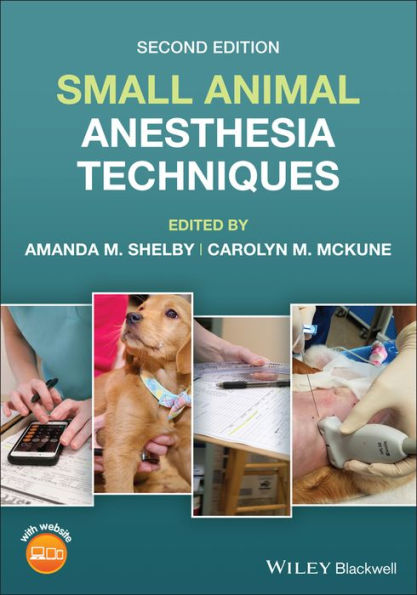Small Animal Anesthesia Techniques offers quick reference to essential information for anesthetizing canine, feline, and exotic animal patients, presenting easy-to-follow protocols to support veterinary technicians and veterinary practitioners in safely and effectively delivering anesthesia in clinical practice. This book is highly unique in its quick reference, techniques-focused approach, making it ideal for all professionals seeking procedure-based coverage of the topic.
Designed for fast access in the clinical setting, the text covers practical information on anesthetic plans, equipment, potential complications, and more. A companion website provides video clips, images, and worksheets.
The Second Edition has been thoroughly updated throughout to reflect advances in equipment, knowledge, and trends, now covering anaphylaxis under anesthesia, opioid alternatives in the face of drug shortages, feline and canine pain scales, reducing mortality associated with anesthesia, managing difficult intubations, the importance of gastroprotectants and use of medications to combat vomiting, and other trending topics and areas of interest since the 2014 edition was published. Additional images, tables, and charts have also been added to further enhance the text.
Small Animal Anesthesia Techniques also provides information on:
- Important concepts of anesthesia, including safety in anesthesia through practical steps like anesthesia checklists
- New and important advances in equipment, such as patient warming and difficult airway management equipment
- Relevant literature reviews of a multitude of drugs for use peri-operatively, including CBD for analgesia and liposomal encapsulated bupivacaine for long term wound desensitization
- New developments that an evolving veterinary practice demands, including those not yet popular in the mainstream
Small Animal Anesthesia Techniques is a must-have reference for small animal veterinary technicians and practitioners. It is an extremely valuable resource both in the knowledge contained within and the highly practical guidelines for implementing concepts in the field to provide better care to small animals of all types.
Small Animal Anesthesia Techniques offers quick reference to essential information for anesthetizing canine, feline, and exotic animal patients, presenting easy-to-follow protocols to support veterinary technicians and veterinary practitioners in safely and effectively delivering anesthesia in clinical practice. This book is highly unique in its quick reference, techniques-focused approach, making it ideal for all professionals seeking procedure-based coverage of the topic.
Designed for fast access in the clinical setting, the text covers practical information on anesthetic plans, equipment, potential complications, and more. A companion website provides video clips, images, and worksheets.
The Second Edition has been thoroughly updated throughout to reflect advances in equipment, knowledge, and trends, now covering anaphylaxis under anesthesia, opioid alternatives in the face of drug shortages, feline and canine pain scales, reducing mortality associated with anesthesia, managing difficult intubations, the importance of gastroprotectants and use of medications to combat vomiting, and other trending topics and areas of interest since the 2014 edition was published. Additional images, tables, and charts have also been added to further enhance the text.
Small Animal Anesthesia Techniques also provides information on:
- Important concepts of anesthesia, including safety in anesthesia through practical steps like anesthesia checklists
- New and important advances in equipment, such as patient warming and difficult airway management equipment
- Relevant literature reviews of a multitude of drugs for use peri-operatively, including CBD for analgesia and liposomal encapsulated bupivacaine for long term wound desensitization
- New developments that an evolving veterinary practice demands, including those not yet popular in the mainstream
Small Animal Anesthesia Techniques is a must-have reference for small animal veterinary technicians and practitioners. It is an extremely valuable resource both in the knowledge contained within and the highly practical guidelines for implementing concepts in the field to provide better care to small animals of all types.

Small Animal Anesthesia Techniques
432
Small Animal Anesthesia Techniques
432Paperback(2nd ed.)

